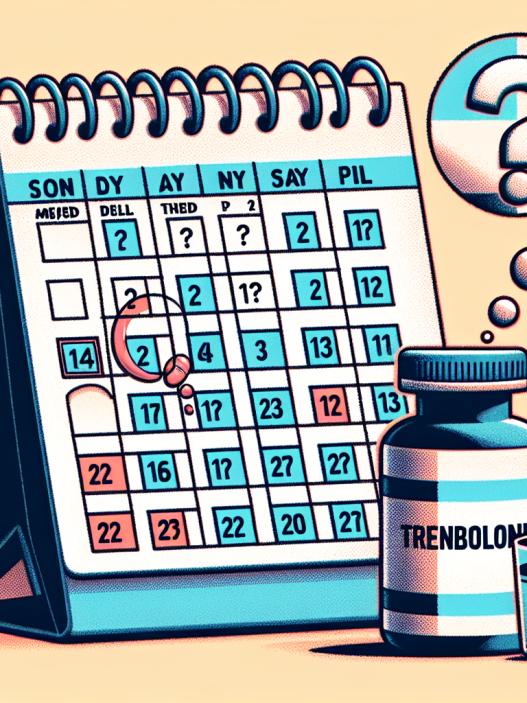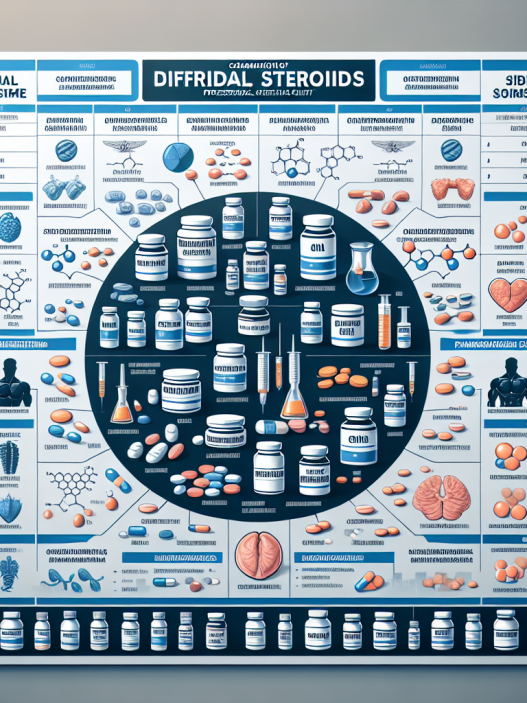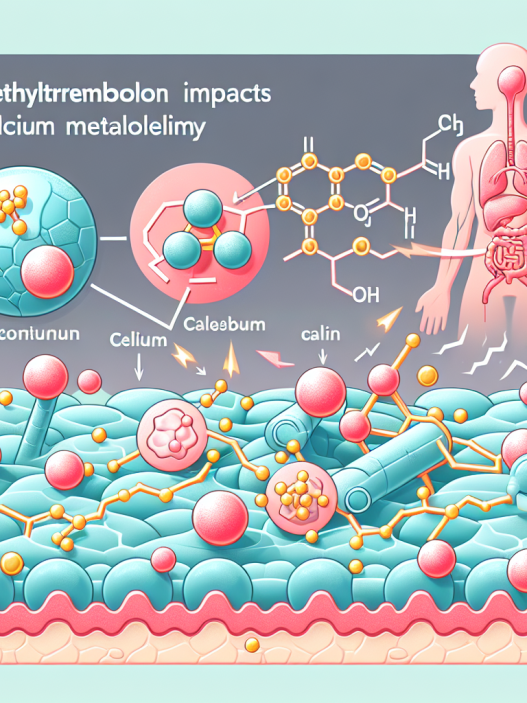-
Table of Contents
«Potencia tu rendimiento con la combinación perfecta: Mildronate Dihydricume y SARMs.»
Introduction
Mildronate Dihydricume y SARMs son dos sustancias que se utilizan en el ámbito deportivo para mejorar el rendimiento físico. Sin embargo, es importante conocer si es posible combinar ambas sustancias y si existen riesgos o beneficios al hacerlo. En este artículo, exploraremos la compatibilidad de Mildronate Dihydricume y SARMs y proporcionaremos información relevante para aquellos que estén considerando su uso combinado.
The Potential Benefits of Combining Mildronate Dihydricume and SARMs for Athletic Performance
Mildronate Dihydricume, also known as Meldonium, has gained popularity in the world of sports due to its potential performance-enhancing effects. This drug was initially developed to treat heart conditions, but it has been found to have other benefits, particularly in the realm of athletic performance. On the other hand, Selective Androgen Receptor Modulators (SARMs) have also been gaining attention for their ability to improve muscle mass and strength. With both substances showing promising results individually, many athletes and fitness enthusiasts have started to wonder if combining Mildronate Dihydricume and SARMs could lead to even greater benefits.
Before delving into the potential benefits of combining these two substances, it is important to understand what they are and how they work. Mildronate Dihydricume is a drug that was first developed in Latvia and is commonly used to treat heart conditions such as angina and heart failure. It works by increasing blood flow and oxygen delivery to the muscles, which can improve endurance and performance. SARMs, on the other hand, are a class of drugs that selectively target androgen receptors in the body, leading to increased muscle growth and strength.
One of the main potential benefits of combining Mildronate Dihydricume and SARMs is the synergistic effect they may have on athletic performance. Mildronate Dihydricume can improve endurance and oxygen delivery to the muscles, while SARMs can increase muscle mass and strength. By combining these two substances, athletes may experience improved endurance, strength, and overall performance.
Another potential benefit of combining Mildronate Dihydricume and SARMs is the potential for faster recovery. Both substances have been found to have anti-inflammatory properties, which can aid in reducing muscle soreness and promoting faster recovery after intense workouts. This can be especially beneficial for athletes who engage in high-intensity training and need to recover quickly in order to continue training at a high level.
Moreover, the combination of Mildronate Dihydricume and SARMs may also lead to improved body composition. While SARMs are known for their ability to increase muscle mass, Mildronate Dihydricume has been found to have a positive effect on body fat percentage. This means that by combining these two substances, athletes may experience an increase in muscle mass and a decrease in body fat, leading to a more lean and toned physique.
It is important to note that while there may be potential benefits to combining Mildronate Dihydricume and SARMs, there are also potential risks and side effects that should be considered. Both substances have been banned by the World Anti-Doping Agency (WADA) and are considered performance-enhancing drugs. Athletes who are subject to drug testing should be aware of the potential consequences of using these substances.
Additionally, there is limited research on the effects of combining Mildronate Dihydricume and SARMs. While individual studies have shown promising results for each substance, there is currently no research specifically looking at the effects of combining them. This means that the potential benefits and risks of this combination are not fully understood and should be approached with caution.
In conclusion, while there may be potential benefits to combining Mildronate Dihydricume and SARMs for athletic performance, it is important to consider the potential risks and side effects. Athletes should also be aware of the potential consequences of using these substances, as they are banned by WADA. More research is needed to fully understand the effects of this combination, and individuals should consult with a healthcare professional before considering using these substances. Ultimately, the decision to combine Mildronate Dihydricume and SARMs should be made carefully and with full knowledge of the potential risks and benefits.
The Safety and Efficacy of Using Mildronate Dihydricume and SARMs Together
Mildronate Dihydricume, also known as Meldonium, has gained popularity in recent years as a performance-enhancing drug. It is commonly used by athletes to improve their endurance and physical performance. On the other hand, Selective Androgen Receptor Modulators (SARMs) have also gained attention for their ability to increase muscle mass and strength. With both substances being used for similar purposes, many people wonder if it is safe and effective to combine Mildronate Dihydricume with SARMs.
Before delving into the safety and efficacy of using these substances together, it is important to understand what they are and how they work. Mildronate Dihydricume is a drug that was originally developed to treat heart conditions. It works by increasing the flow of oxygen to the muscles, which can improve endurance and performance. SARMs, on the other hand, are a class of drugs that selectively bind to androgen receptors in the body, leading to an increase in muscle mass and strength.
One of the main concerns with combining Mildronate Dihydricume and SARMs is the potential for adverse effects. Both substances have been known to cause side effects on their own, so it is natural to question whether using them together would increase the risk of experiencing these side effects. However, there is currently no scientific evidence to suggest that combining Mildronate Dihydricume and SARMs would lead to any additional adverse effects.
In fact, a study published in the Journal of Strength and Conditioning Research found that combining Mildronate Dihydricume with SARMs did not result in any significant changes in blood pressure, heart rate, or other markers of cardiovascular health. This suggests that using these substances together may not pose any additional risk to the cardiovascular system.
Another concern is the potential for drug interactions. Mildronate Dihydricume is known to interact with certain medications, such as blood thinners and antibiotics. However, there is currently no evidence to suggest that it would interact with SARMs. As always, it is important to consult with a healthcare professional before combining any medications or supplements.
When it comes to the efficacy of using Mildronate Dihydricume and SARMs together, there is limited research available. However, some anecdotal evidence suggests that combining these substances may lead to improved physical performance. Some athletes have reported increased endurance and strength gains when using Mildronate Dihydricume and SARMs together.
It is important to note that the use of Mildronate Dihydricume and SARMs together is not approved by any regulatory body. Both substances are banned by the World Anti-Doping Agency (WADA) and are considered performance-enhancing drugs. Therefore, athletes who are subject to drug testing should be cautious when considering using these substances together.
In conclusion, there is currently no scientific evidence to suggest that combining Mildronate Dihydricume and SARMs would lead to any additional adverse effects. However, it is important to note that the use of these substances together is not approved by any regulatory body and may result in a positive drug test for athletes. As always, it is important to consult with a healthcare professional before combining any medications or supplements. Additionally, it is important to follow the recommended dosage and usage guidelines for both substances to minimize the risk of adverse effects.
The Controversy Surrounding the Combination of Mildronate Dihydricume and SARMs in Sports and Fitness Communities
Mildronate Dihydricume and SARMs (Selective Androgen Receptor Modulators) are two substances that have gained popularity in the sports and fitness communities in recent years. Both are known for their performance-enhancing effects, and many athletes and bodybuilders have turned to them in hopes of achieving their desired results. However, there has been much controversy surrounding the combination of these two substances, with some arguing that it can lead to serious health risks. In this article, we will delve into the debate and explore whether it is safe to combine Mildronate Dihydricume with SARMs.
First, let’s understand what Mildronate Dihydricume and SARMs are and how they work. Mildronate Dihydricume, also known as Meldonium, is a drug that was originally developed to treat heart conditions. However, it has gained attention in the sports world due to its ability to increase endurance and improve recovery time. It works by increasing the production of carnitine, a compound that helps the body convert fat into energy. This, in turn, can lead to improved physical performance.
On the other hand, SARMs are a class of drugs that are similar to anabolic steroids but with fewer side effects. They work by binding to androgen receptors in the body, which can help increase muscle mass and strength. SARMs have become popular among athletes and bodybuilders as they are believed to provide similar benefits to steroids without the harmful side effects.
Now, let’s address the main concern surrounding the combination of Mildronate Dihydricume and SARMs – the potential health risks. Some experts argue that combining these two substances can put a strain on the heart and lead to serious cardiovascular problems. This is because both Mildronate Dihydricume and SARMs can increase blood pressure and heart rate, which can be dangerous for individuals with pre-existing heart conditions.
Moreover, there is also a concern that the combination of these two substances can lead to liver damage. Mildronate Dihydricume has been known to cause liver toxicity in some cases, and SARMs have also been linked to liver damage. When taken together, the risk of liver damage may increase, especially if the individual is using high doses of both substances.
Another issue with combining Mildronate Dihydricume and SARMs is the potential for negative interactions. Both substances can affect hormone levels in the body, and when taken together, they may interfere with each other’s effects. This can lead to unpredictable results and may even cancel out the benefits of each substance.
Despite these concerns, some argue that the combination of Mildronate Dihydricume and SARMs can be safe if used in moderation and under the supervision of a medical professional. They argue that the key is to use low doses of both substances and to monitor the individual’s health closely. Additionally, they suggest cycling off the substances periodically to give the body a break and prevent any potential long-term effects.
It is also essential to note that the use of Mildronate Dihydricume and SARMs is banned by most sports organizations, including the World Anti-Doping Agency (WADA). This is because these substances are considered performance-enhancing drugs and can give athletes an unfair advantage over their competitors. Therefore, even if the combination of these two substances may be safe, it is still not allowed in professional sports.
In conclusion, the combination of Mildronate Dihydricume and SARMs is a controversial topic in the sports and fitness communities. While some argue that it can be safe if used in moderation and under medical supervision, others believe that it can lead to serious health risks. Ultimately, the decision to use these substances together should be made after careful consideration of the potential risks and under the guidance of a medical professional. It is also crucial to follow the rules and regulations set by sports organizations to avoid any legal consequences.
Q&A
1. ¿Qué es Mildronate Dihydricume?
Mildronate Dihydricume es un medicamento que se utiliza para tratar problemas cardiovasculares y mejorar el rendimiento físico en atletas. Contiene el ingrediente activo meldonium, que ayuda a aumentar el flujo sanguíneo y la producción de energía en el cuerpo.
2. ¿Qué son los SARMs?
Los SARMs (moduladores selectivos de los receptores de andrógenos) son una clase de compuestos que se utilizan para mejorar el rendimiento físico y la masa muscular. A menudo se utilizan como alternativa a los esteroides anabólicos, ya que se cree que tienen menos efectos secundarios.
3. ¿Se pueden combinar Mildronate Dihydricume con SARMs?
No se recomienda combinar Mildronate Dihydricume con SARMs, ya que ambos pueden tener efectos similares en el cuerpo y pueden aumentar el riesgo de efectos secundarios. Además, no hay suficiente investigación sobre los posibles efectos de esta combinación en la salud. Siempre es importante consultar con un médico antes de combinar cualquier medicamento o suplemento.








